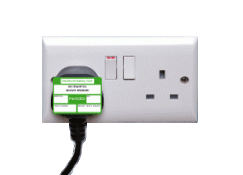What is Cyber-Bullying?
Cyber bullying is an on-line risk and a growing problem. Also, it often accrues more than once; deliberate, repeated, intentional victimisation of a person. Technology is misused for example Blackberry Messenger (BBM), Facebook, Twitter and Email in order to threaten, harass, humiliate or embarrass victims. Examples of cyber bullying can be; if someone sends you a malicious message by text or to the web. But, hacking into somebody’s account and changing their profile or posting embarrassing personal information about another person is also cyber bullying; this can lead to people committing suicide. However, severity has increased over numerous years because technology has improved causing people to use it.
There are different forms of cyber-bullying:
- Flaming Online arguments using electronic messages with aggressive or abusive language.
- Harassment Repeatedly sending abusive, insulting or unwanted messages.
- Denigration Spreading gossip lies or rumours about someone to damage their reputation or friendships.
- Impersonation Pretending to be someone else and sending or posting material.
- Outing Disclosing someone else’s secrets or embarrassing information online without their consent.
- Trickery Talking someone into revealing secrets or embarrassing information, then publishing it online.
- Exclusion Intentionally excluding someone from an online group.
- Cyberstalking Repeated, intense harassment and denigration that includes threats or creates significant fear.
How does Cyber-Bullying affect people?
Cyber bullying can have devastating effects leaving victims frightened and leaving emotional damage rather than physical scars. It can happen at any time of the day or night during the 24 hour day. Cyber bullying is slightly different from verbal bullying as they keep their distance, but numerous cyber bullies believe that they won’t get caught. However, it actually is a lot easier as whatever is posted or said online can be retraced. It is mostly common among teenagers.
Cyber Bullying Methods:

Text Messages The use of ‘pay as you go’ handsets makes it very hard to trace individuals; therefore the victim may never know the identity of the bully. Text Messages are often threatening, offensive and persistent.
Picture/video-clips via mobile phone cameras ‘Happy slapping’ is a term used where physical assaults are filmed and then shared. This leaves the victim feeling threatened and embarrassed. Clear images would have been captured and sent to others perhaps by Bluetooth or uploading pictures online.
Mobile phone calls Bullies bombard their victims with silent or persistent calls and abusive messages, or steal the phone and use it to harass others, causing the victim to appear responsible for the call.
E-mails Multiple e-mail accounts can be set up easily using false names, which makes it possible to send threatening or bullying emails without trace.
Chatrooms Without security measures chatrooms are an easy way of targeting people. This includes on games sites, consoles and virtual worlds.
Instant Messaging (IM) Once messages are posted they are in ‘cyberland’ and it is too late for reflection or censorship. Arguments can escalate which could include groups of people ganging up on one target. Think before you send as you cannot undo what has been sent.
Social Networking Sites A quick and easy way to catch up, share photos and have fun if appropriate security settings are in place. Pressure to have a large number of followers can lead to the risk of accepting ‘strangers’ as ‘friends’, leaving personal information about you open to all. It is easy to open a false account and pose as someone else, allowing them to hide their true identity as well as stalk you. You are also open to the spread of gossip and rumours.
According to recent research the reason why children become cyber-bullies is:
• 81% think it is funny
• 64% do not like the person
• 45% view the victim as a loser
• 59% think cyber-bullying is no big deal
• 47% think there will be no consequences
• 45% think they won’t get caught
Problems:
In addition to this, we have to acknowledge that cyber bullies may have problems at home perhaps their parents’ relationships or even they are getting bullied themselves. However, cyber bullying is no different from any other bullying in which ever case it makes you feel isolated, have anxious feelings and maybe school grades could be affected.
Solutions to prevent Cyber-Bullying:
You must be aware of the solutions can be made to prevent cyber bullying, If you are ever unfortunate enough to experience cyber bullying; then you must block the user immediately; this means that you won’t be able to see their profile and they won’t be able to see yours, which stops communication altogether. Never forward messages which you have received from the cyber bully, always print screen and save the chat, then speak to an adult. I also recommend that if you are getting bullied online to click the ‘report’ button, this button appears on all digital communications; you use that button when you are getting some type of abuse, it then automatically sends a copy of the cyber bullying abuse to CEOP (Child Exploitation Online Protection) and sometimes ISP (Internet Service Provider).

What is blamed for Cyber-Bullying?
Technology is blamed for cyber bullying but it should be identified that this is a ‘social problem’ and should be prevented in the first place by educating people. Such as; e-safety, schools, parents and children conversations. It is important to talk about cyber bullying and raise awareness of it, especially to young people.



























